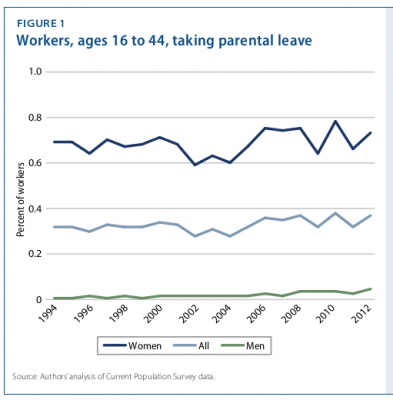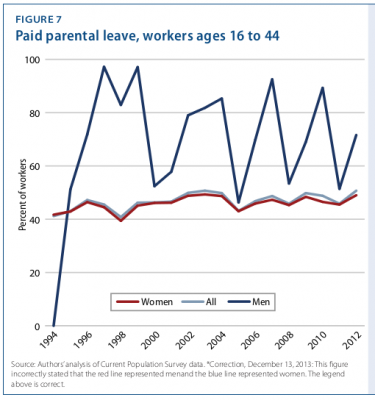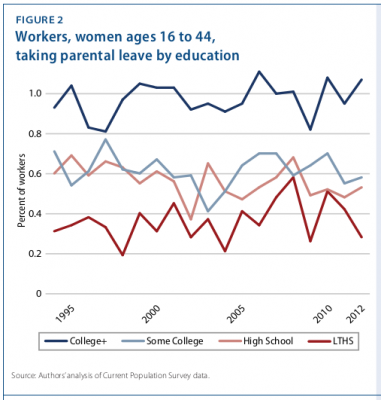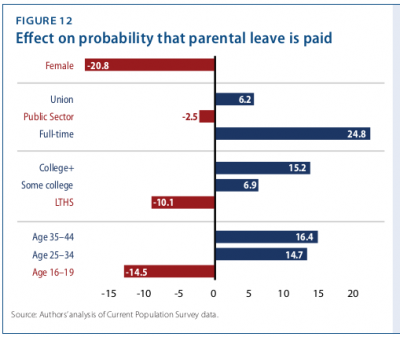December 16, 2013
It has been 20 years since the passage of the Family and Medical Leave Act (FMLA), a landmark piece of legislation that guaranteed covered workers the right to take up to 12 weeks of job-protected leave in the event of a birth or adoption or to deal with a serious health problem affecting the worker or a close relative.
Millions of workers have benefited from the FMLA, but two aspects of the law have hampered the use of family and medical leave. The first is that roughly 40 percent of US workers aren’t covered by the act, either because the firm where they work is too small (fewer than 50 workers) or because they haven’t worked long enough with their current employer (at least 1,250 hours in the preceding 12 months). The second limitation of the law is that the leave provided is unpaid, which greatly reduces take-up rights of low- and middle-income workers, especially men.
In a report jointly released by CEPR and the Center for American Progress on Thursday, Heather Boushey, Jane Farrell, and I look at data on the use of parental leave in the first two decades since the passage of the FMLA.
For me, three findings stand out. First, the share of women and men taking parental leave has barely budged since the passage of the FMLA.
About 0.7 percent of women workers in the 16-to-44 age range were on parental leave in any given week, a number that has not changed in any meaningful way. For men the share grew very slightly over the period, but even by 2012, the corresponding share of men on parental leave was below 0.1 percent. In the last five years of data, women were nine times more likely than men to be on parental leave.
Second, the share of workers whose parental leave was paid has remained stuck at below 50 percent.
The erratic line in the graph above shows the results for men only. The line jumps around a lot because the sample size of men taking parental leave in the Current Population Survey data we use is very small. Nevertheless, it is striking that the share of men whose parental leave is paid (the average is about 75 percent) is substantially higher than the share of women whose leave is paid (about 45 percent, on average). Part of this is that men are more likely to have access to combinations of leave (parental leave, vacation, paid sick days) that can finance their parental leave spells. But, we think that another important part of the explanation is that many men will only take leave when it is paid.
The third key finding is that access to parental leave mirrors broader patterns of inequality in the economy. Less-educated workers, for example, are much less likely to take parental leave.
The top line in the figure above shows the share of women workers with a college degree or more who took parental leave in each year. The lines below show the corresponding rates for women workers with lower levels of education. Adding insult to injury, the share of women whose leave was paid shows a similar pattern:
Women with a college degree or more were about 15 percentage points more likely to be on paid parental leave then women who had only a high school degree, and about 25 percentage points more likely to be on paid leave than women who had not finished high school.
Our paper argues that the best way to expand the use of parental leave –and to overcome the evident gender and class inequities– would be to provide it through a universal social insurance program, along the lines of the way we run Social Security and Medicare.
This post originally appeared on John Schmitt’s blog, No Apparent Motive.










